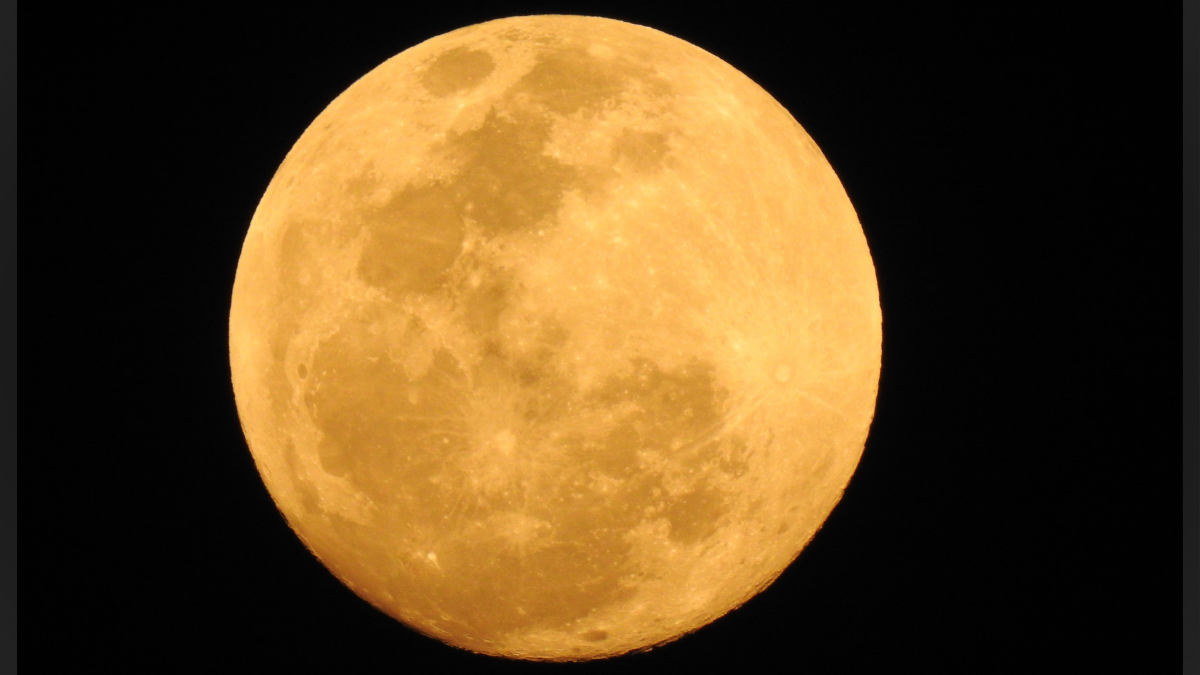On Jan. 28, 2021, skygazers can expect to see the first full moon of the decade as the so-called full “wolf moon” will appear in the sky alongside Mars and Mercury — at least in some parts of the world.
January’s full moon will reach its peak illumination at 2:16 p.m. EST on the 28th, according to NASA. But those hoping to catch a glimpse of the “wolf moon” won’t be able to sneak a peek until it rises above the horizon around sunset time, which will be shortly after 5:30 p.m. EST, according to Time and Date.
Each month’s full moon has its own unique name that typically reflects the time of year it can be viewed. Take June’s “strawberry moon,” for example, so named for the month when strawberries typically ripen. Similarly, the “harvest moons” of the fall get their namesakes for a month where the fall typically comes into full swing and farmers can expect to harvest the last of their crops. And the Almanac notes that each month has its own special name when the full moon comes around. Here are a few of the most common:
- January: Wolf moon, Center moon, Cold moon, Freeze moon, Frost Exploding moon
- February: Snow moon, Bear moon, Eagle moon, Raccoon moon
- March: Worm moon, Snow Crust moon, Sugar moon, Crow Comes Back moon
- April: Pink moon, Sugar maker moon, Sucker moon, Frog moon, Breaking Ice moon
- May: Flower moon, Planting moon, Budding moon, Egg-laying Moon
- June: Strawberry moon, Hatching moon, Hot moon, Birth moon, Blooming moon
- July: Buck moon, Berry moon, Halfway Summer moon, Raspbery moon, Salmon moon
- August: Sturgeon moon, Harvest moon, Black Cherries Moon, Ricing moon
- September: Corn moon, Autumn moon, Harvest moon, Mating moon, Rutting moon
- October: Hunter moon, Freezing moon, Ice moon, Falling Leaves moon
- November: Beaver moon, Frost moon, Whitefish moon, Freezing moon
- December: Cold moon, Hoar Frost moon, Snow moon, Long Night moon, Winter Maker moon
According to The Old Farmer’s Almanac, the “wolf” title holds roots in Native American, Colonial American and European history — and not because wolves howl at the moon. These wild canines are thought to howl more during the winter months, and in January in particular. Wolves howl to define their territory or find their pack, as well as to form familial bonds and coordinate hunting. And in the winter months, wolves tend to be more territorial and defensive as tensions rise to find a mate and resources become more limited ahead of the spring season, according to the National Park Service.
The “wolf moon" typically represents the first full moon of winter, a season that officially begins on the Dec. 21 solstice. But the 2020-21 winter season saw its first full moon on Dec. 29, 2020, when the "cold moon" rose in the night skies.

